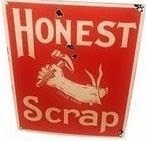Publisher: Sourcebooks Jabberwocky
Year of publication: 2012
# of chapters: 18
# of pages: 354
Genre: Adventure/Mystery
Website: j-jacobs.com
Plot summary (from website):
There’s nothing twelve-year-old Samantha Sutton wants more than to become an adventure-seeking archaeologist like her brilliant Uncle Jay. Samantha’s big dreams are finally coming true when Jay invites her along on a summer excavation exploring an ancient temple in the Peruvian Andes.
But this adventure isn’t exactly what she thought it would be with her nosy older brother, Evan, and Jay’s bossy colleagues monitoring her every move. On top of all that, she has to deal with the local legend, El Loco: a ghostly madman who supposedly haunts the ruins. But when the project’s most important finds go missing, it’s up to Samantha to solve the mystery before Jay loses his job and the treasures of the temple are lost forever.
The book concludes with an Author’s Note, describing Jordan’s archaeological work in Chavin, and how Samantha’s adventures draw from his real-life experiences.
Next book in the series:
Samantha Sutton and the Winter of the Warrior Queen (coming in fall 2013)
Positive Points
The theme of the story is about archaeology, which is a fascinating topic. I learned a lot by reading this book, from an author who is an expert in the subject. The book shows the interesting aspects of it: finding items buried long ago, discovering an ancient culture's way of life, working as a team with other people who have the same interest and respect for the field. It also shows the less interesting aspects: digging in the mud near a smelly pigsty, working hard and finding only broken shards ... I mean sherds, getting stung by insects while working long days under a hot sun.
I also learned a little Spanish, thanks to Samantha's notebook pages between each chapter. Some words were not translated in the notebook nor in the chapter itself, but I could easily figure out the meaning by context, much like Samantha did.
The notebook pages written in Sam's handwriting, including her sketches of finds and galleries, gave a hint of what was coming next in the story and made me want to keep reading.
The rivalry between her and her brother, Evan, was very realistic and made me chuckle more than once. I have an elder brother, and I could relate.
I also learned a little Spanish, thanks to Samantha's notebook pages between each chapter. Some words were not translated in the notebook nor in the chapter itself, but I could easily figure out the meaning by context, much like Samantha did.
The notebook pages written in Sam's handwriting, including her sketches of finds and galleries, gave a hint of what was coming next in the story and made me want to keep reading.
The rivalry between her and her brother, Evan, was very realistic and made me chuckle more than once. I have an elder brother, and I could relate.
Each chapter ends with a cliffhanger, making me want to keep reading. The local lore about the Madman, items disappearing from the galleries, and the mysterious behavior of Adam Quint added intrigue to the story.
Although the story was interesting, it wasn't a "can't put it down" type of book. The plot was kind of even, things happening throughout the book but not really escalating into anything bigger, except around the end when the mysteries are being resolved.
The character growth was minimal. Sam and her brother are still pretty much the same at the end of the story as they were at the beginning. The hints throughout the book about their parents not caring and both focused on their work didn't lead to any resolution. I would have expected some kind of change in their parents' attitude, maybe when they both got home and related their adventures. But this is book one of a series, so I would imagine something will happen in a subsequent book.
I was surprised to find out that Isabel, a local Peruvian girl, was thirteen. I thought she was much younger, ten, maybe. I would have liked a hint earlier in the story of how old she was.
One thing that bothered me a little was the mention of drugs, which is a heavier topic we normally find in YA books, not in MG. But this book is clearly MG in general, and the drugs mentioned are part of the culture at the center of this story. I'm just not sure if it's suited for young children to read about.
I found a few grammar mistakes and typos, but I can't blame the writer for that. This book has been edited by an indie publisher. Still, I was a bit disappointed, expecting to find an error-free book.
What makes this book unique
The theme of archaeology definitely makes this book stand out from the crowd. The author is knowledgeable on the subject, having worked in the field for many years. I also loved the notebook pages between each chapter. It was a clever way to translate some of the Spanish words and expressions, and illustrate the items and galleries they discovered.
Overall Impression
Good read in general! Children (and young-at-heart adults) interested in archaeology will enjoy it.
My Rating:
Thinking of purchasing this book? I'll make it easy for you:









































3 comments:
Thanks for sharing about this, both the good and bad. I promoted this during the summer without reading it. It sounds like a good read though maybe could have been stronger in the character growth and action elements of the story.
I always find it interesting when experts in a certain subject can use that as background for a story.
I'm such a sucker for a long title. Thanks for posting!
Post a Comment